Quite often I have someone admit to me that they suffer from what I’d call ‘garden colour anxiety’. They’ll take me into their confidence and whisper that trying to work out a colour scheme for their garden makes them as anxious as a visit to the dentist. Which is sad because mucking around with anything garden-related is surely meant to be fun?
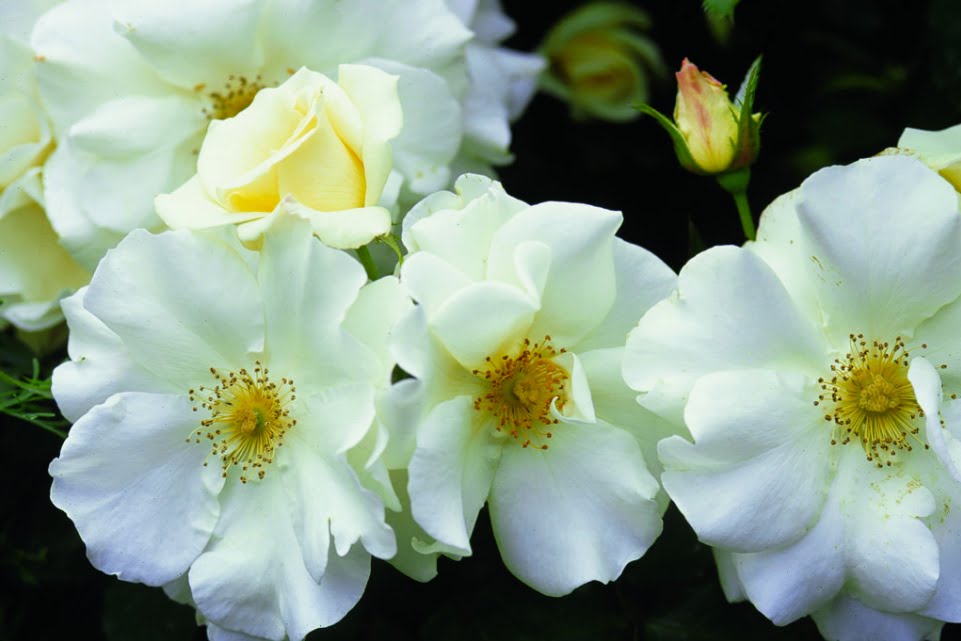
You can’t go wrong with white: here the ground cover rose Flower Carpet White in close-up
But I do understand what they mean. Some people know how to throw clothes on and look fantastic: others just manage to look dressed. Some people’s interiors could be photographed as-is and feature in a magazine, but not most homes.
So how to help those gardeners – and these are perfectly normal people – who freak out when it comes to choosing colour in the garden. Simple. Avoid colour. I smile and reassure them that they can pull off a fantastic result with just green… and… white.
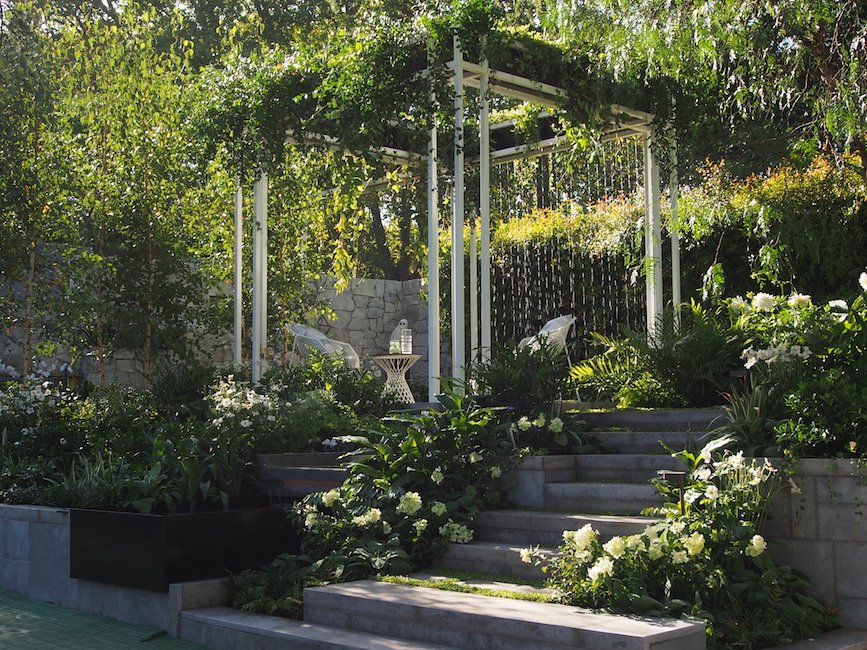
All-white gardens are on-trend too as seen in ‘Back to Babylon’., designed by PTA/Eco Outdoor/Tract at the Melbourne International Flower and Garden Show 2017
If you think about your garden when it’s least flowery – usually in winter, depending on where you live – then you can get a sense of the background that you’ll be working with. If you’re keen to do this seriously, the idea is to take out any existing colour, leaving only the green of foliage to act as the bones or foundation planting.
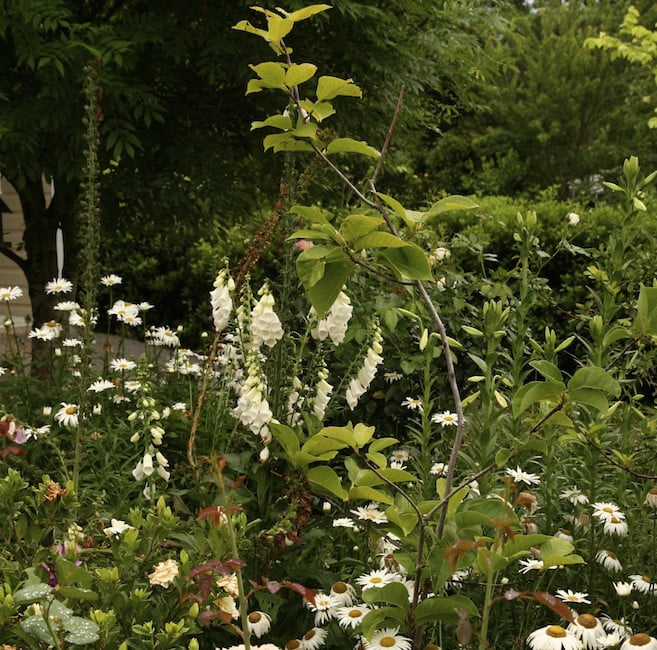
White always goes with white – foxgloves, shasta daisy, gardenia, roses and magnolia
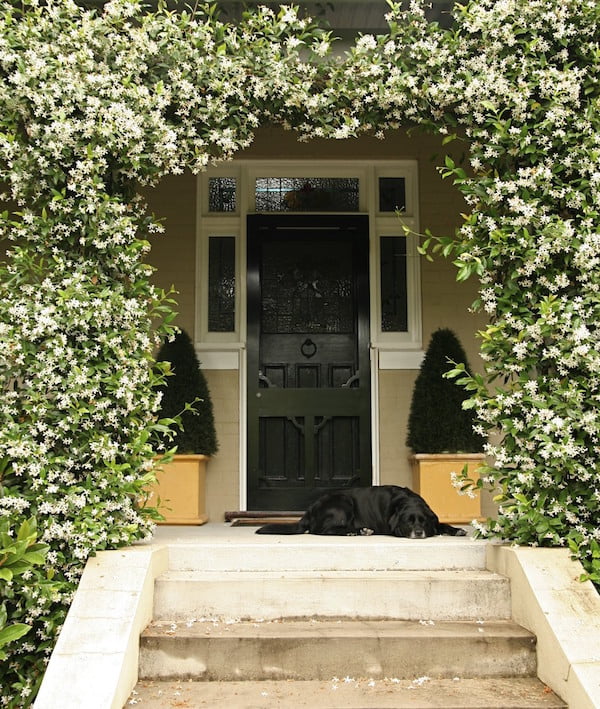
White star jasmine frames this house entrance and picks up the white house detailing
If you’re lucky you may already have a Mexican orange hedge (Choisya ternata) with its white scented flowers. Your fences might have existing cover thanks to the white star jasmine (Trachelospermum jasminoides). And in your garden beds there may be a happy mix of green things: clumping grasses, maybe some box hedging or clipped balls, a little bit of lavender, rosemary, an olive or one of the smaller eucalypts (Eucalyptus caesia is lovely). Remove (or move) anything that’s bright. The hot pink hibiscus. The self-sown orange nasturtiums, or those massive yellow dahlias the size of dinner plates that just didn’t work as well as you’d hoped.
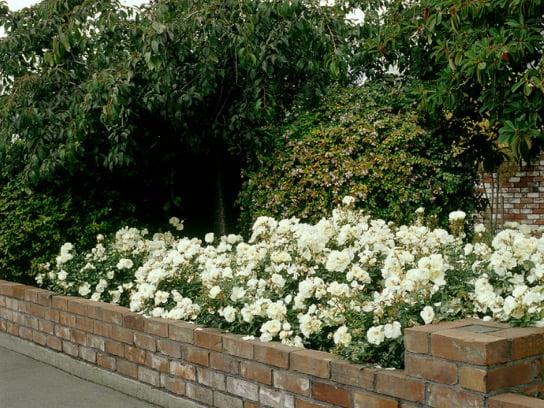
Keeping it simple packs a punch. The brick walls define the space, the bulk of the planting reads as green and the massed roses make it all sing
If you find it hard to be ruthless, ease the pain by gifting your colourful misfits to friends. Also, I find a bit of blue and grey seems to be ok to keep in the mix which is why I’ve given the rosemary and lavender the thumbs up.
Now to the fun bit. Find any white flowering plant that will thrive in your area and pop it in. Do this freely, with gay abandon and without fear because it will all come together and work brilliantly. Think: classic small flowered daisy; something like the free flowering white scented Flower Carpet rose; white jonquils and tulips in spring; white petunias or Volcano phlox in summer; white cosmos; white salivia, white impatiens, Christmas lillies, the white form of the rock rose (Cistus), the white African daisybush (Osteospermum)… etc etc.
You get the idea. If it’s white, bung it in because you can’t go wrong. And if you want to step this up just a little, look at when each thing will be in flower and hunt down white flowering plants to fill in any gaps so you can have a flower show all year around. It’s that easy. Honestly. And if will look really lovely.
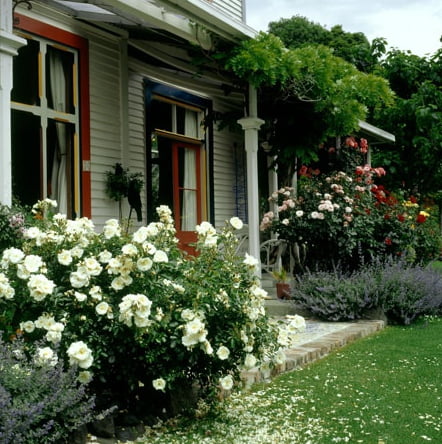
Just to prove how well the keep-it-white approach works, compare the planting in the foreground (left) with that towards the rear (right). White has the knack of making things pop
